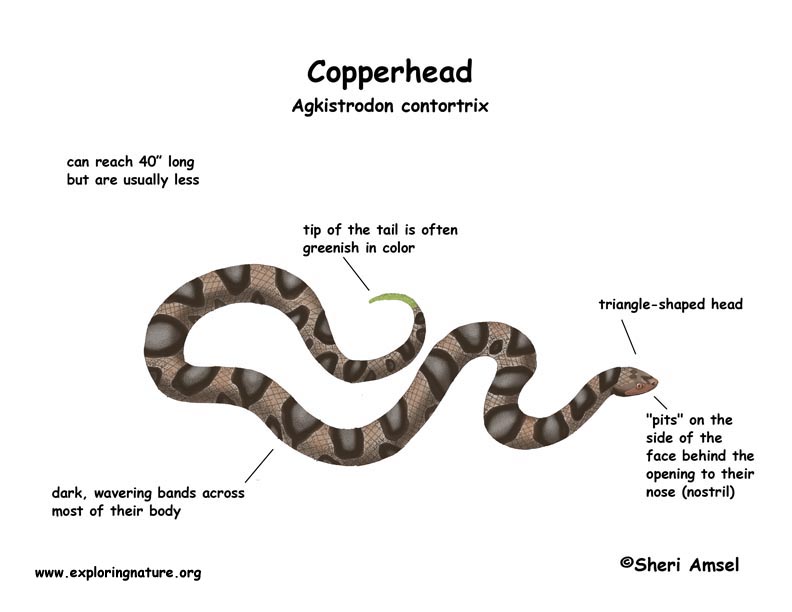

They are found throughout the eastern and central U.S.
They live in the forest, but are not uncommon in suburban areas sunning on rocks and in roadways.
They have dark, wavering bands across most of their body, which helps them blend in very well. The tip of the tail is often greenish in color. They can reach 40” long but are usually less. They have "pits" on the side of their face behind the opening to their nose (nostril).
They den up in winter, often hibernating with other snakes. They like to bask in the sun like many snakes and often do it on roadways, which can result in being run over by cars. They are venomous and will bite, but often do not inject much venom if just trying to scare off predators. Their bite hurts! They may shake the end of their tail in warning, though they have no rattle.
They eat rodents, birds, lizards, other snakes, frogs and insects.
Females give birth in the summer to a dozen live young (ovoviviparous). They can be up to 9” long and lighter in color than the adults with a more yellowish tip to the tail.
Kingdom: Animalia
Phylum: Chordata
Subphylum: Vertebrata
Class: Reptilia
Order: Squamata
Suborder: Serpentes
Family: Viperidae
Genus: Agkistrodon
Species: A. contortrix
When you research information you must cite the reference. Citing for websites is different from citing from books, magazines and periodicals. The style of citing shown here is from the MLA Style Citations (Modern Language Association).
When citing a WEBSITE the general format is as follows.
Author Last Name, First Name(s). "Title: Subtitle of Part of Web Page, if appropriate." Title: Subtitle: Section of Page if appropriate. Sponsoring/Publishing Agency, If Given. Additional significant descriptive information. Date of Electronic Publication or other Date, such as Last Updated. Day Month Year of access < URL >.
Amsel, Sheri. "Snake (Copperhead)" Exploring Nature Educational Resource ©2005-2024. March 25, 2024
< http://www.exploringnature.org/db/view/530 >

